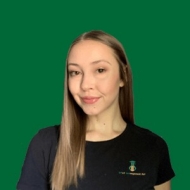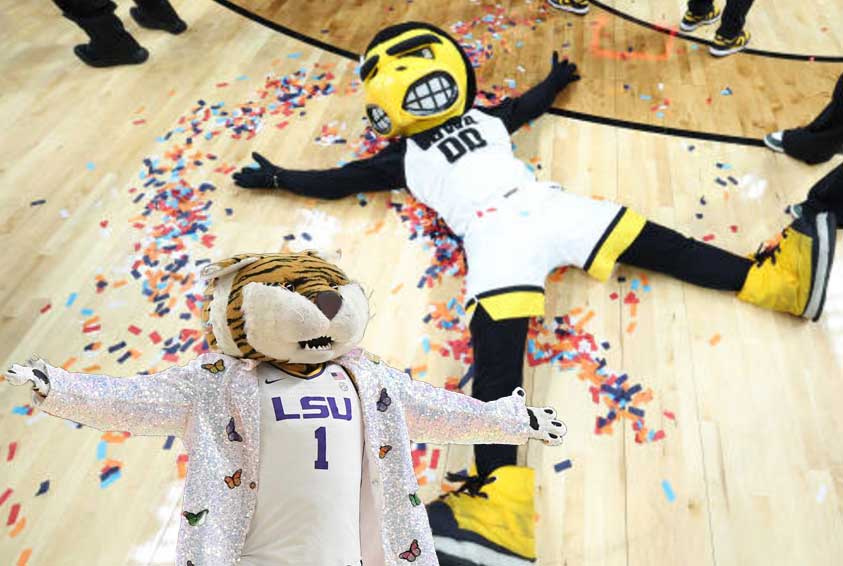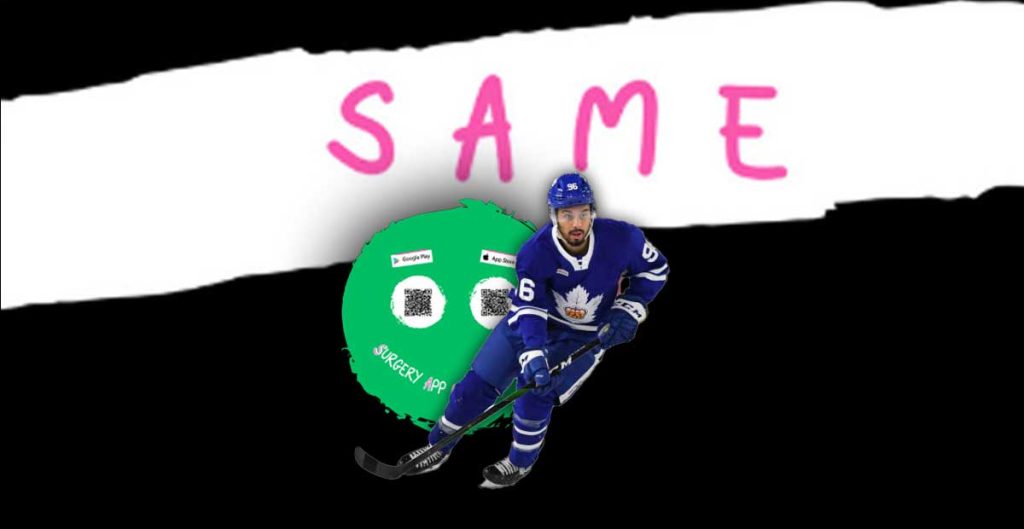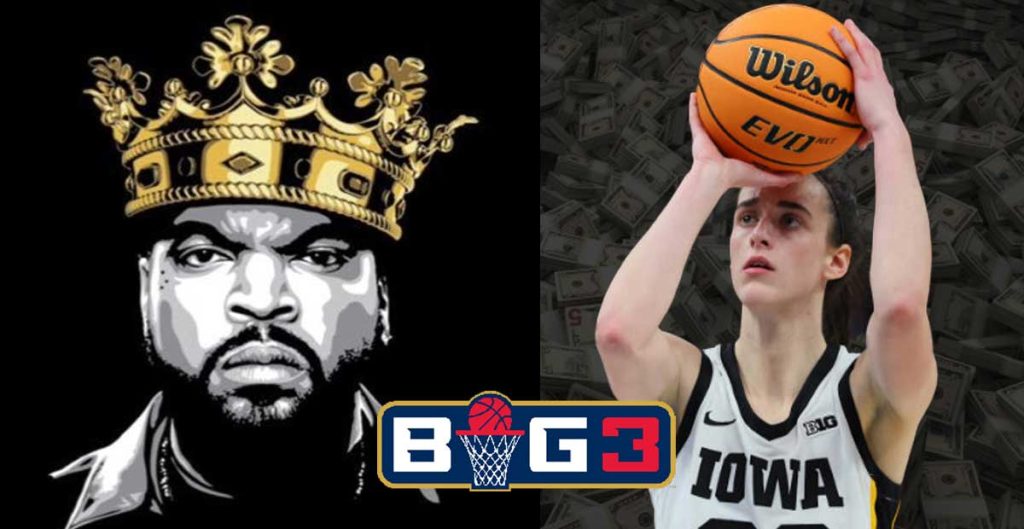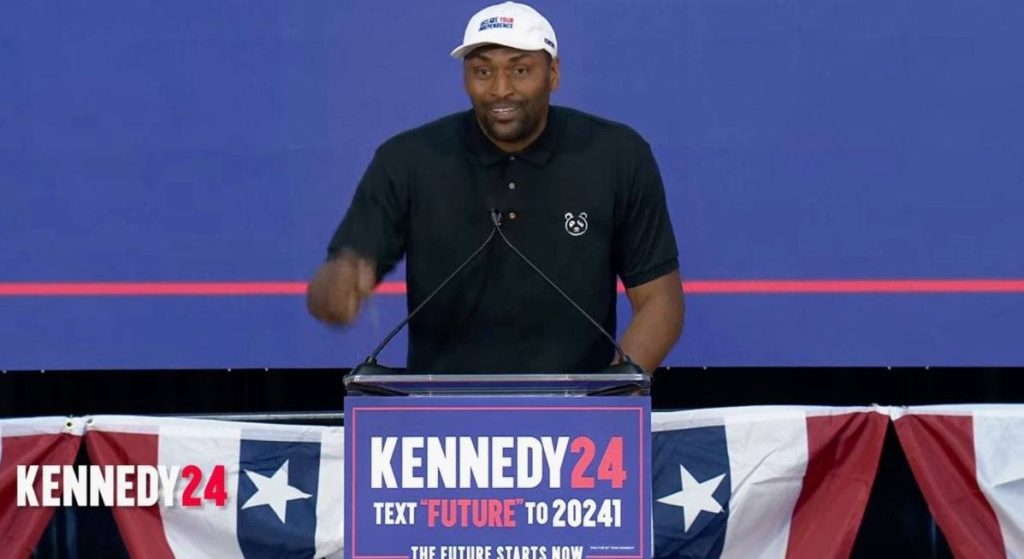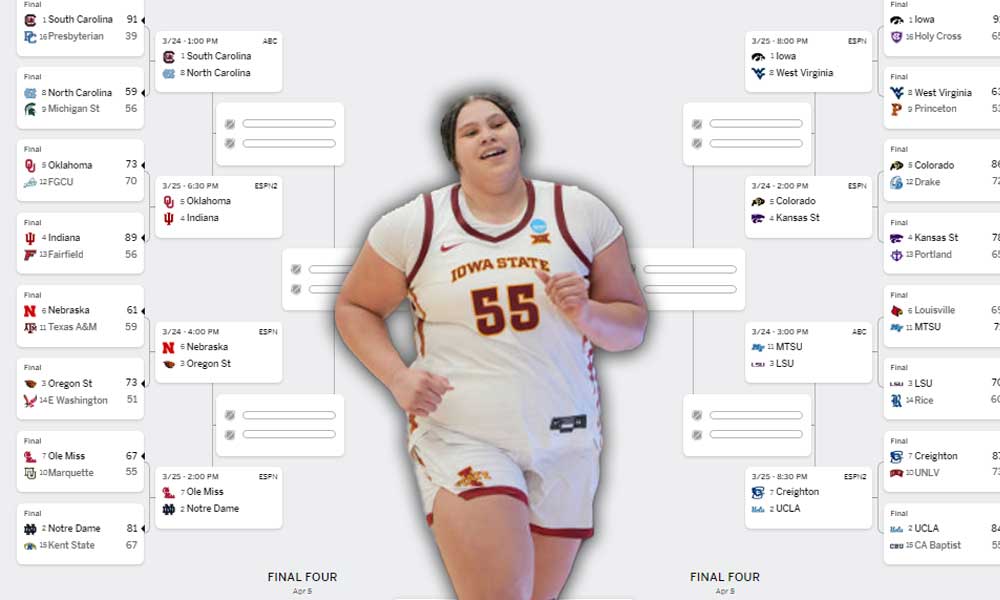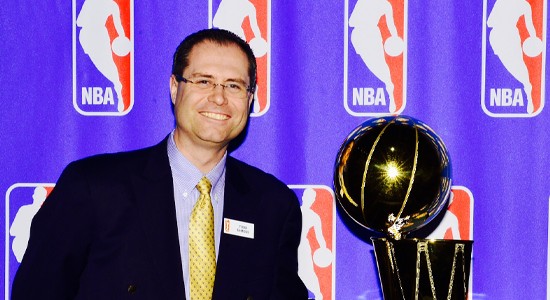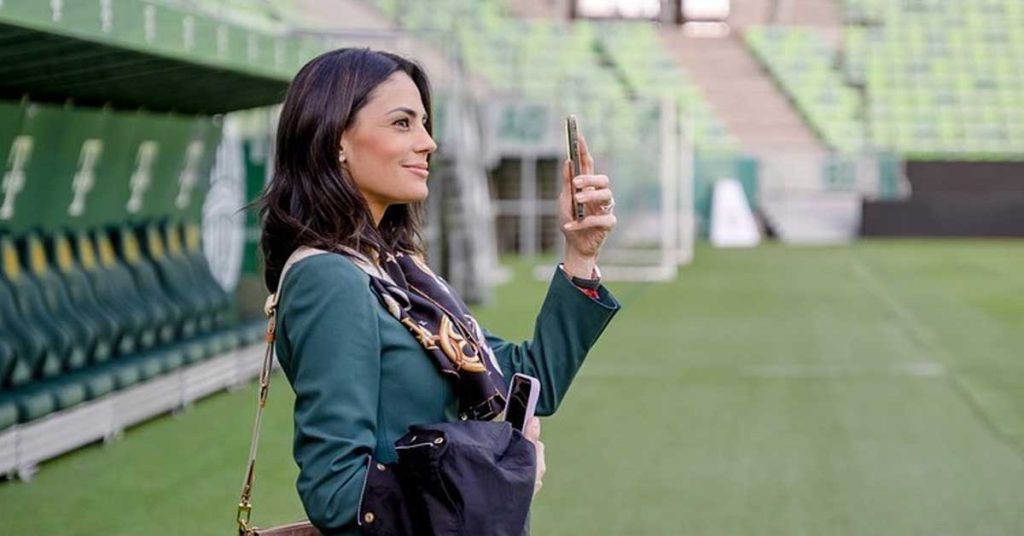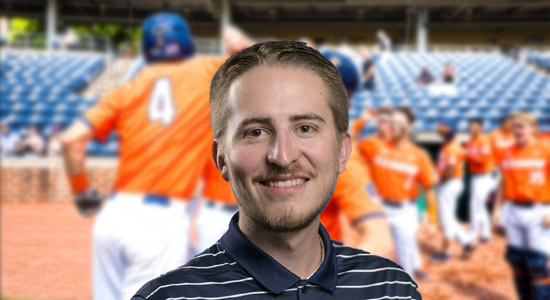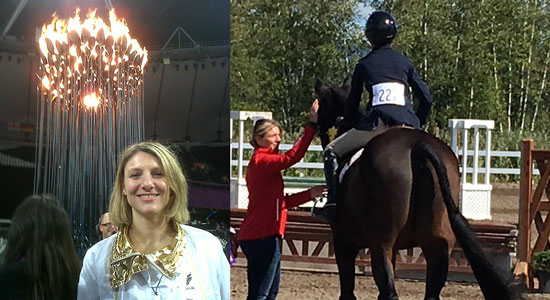
1 on 1 with Anna Johnson | Manager of High Performance | Equestrian Canada

The added challenge in Equestrian is that you need the right horse, at the right stage of development to have that success. No athlete will have success at the highest levels without a great horse and partnership.
Anna Johnson
Manager of High Performance
Equestrian Canada
The Latest
Iowa vs LSU: A Landmark Moment in Women’s College Basketball
Former NHLer Josh Ho-Sang Now A Rapper
Metta World Peace Endorses RFK Jr. for President 2024
Plus Size Women’s College Basketball Star Audi Crooks Redefines Visuals
1Tell us about your role as Manager of High Performance for Equestrian Canada. What does a typical day look like for you?
Over the past 5 years, the organization has been going through many changes to enhance its governance and operational structure, and my role has been continuously evolving and adapting to support new direction and approaches. For the most part, I provide strategic guidance to leadership and support the delivery of projects to improve our business processes and high-performance programs.
In the lead up to the Rio 2016 Olympic and Paralympic Games, I was responsible for developing the Major Games and high-performance framework to prepare, deliver and support the Canadian Equestrian Team members achieve their performance goals at Games. Utilizing individual strengths and unique qualities to build the right environment for people to perform at their best is, no matter their role, something I am very passionate about as it is a vital element for team success.
But, to continuously achieve success at the highest level of any sport, we also need an effective system supporting athlete development from grassroots to the podium. I am currently the project lead on a multi-phase project reviewing the national competition structure to identify areas of alignment with the Long Term Equestrian Development Framework.
Phase one was a massive data-gathering exercise, uncovering information that is significantly helping us identify gaps, analyse business models, and build a suite of performance measurement tools for us to better identify talent and support progression:
Last year I supported the show jumping team at the North American Youth Championships, where Canadian athletes achieved multiple podium finishes and provided me with a first-hand opportunity to see the amazing talent emerging within our system, and to talk to parents and coaches about how they are navigating our system and how we can support them better.
We need to have an effective structure in place to support their progression further, to grow as a sport, and so this is where the focus of my role is right now.
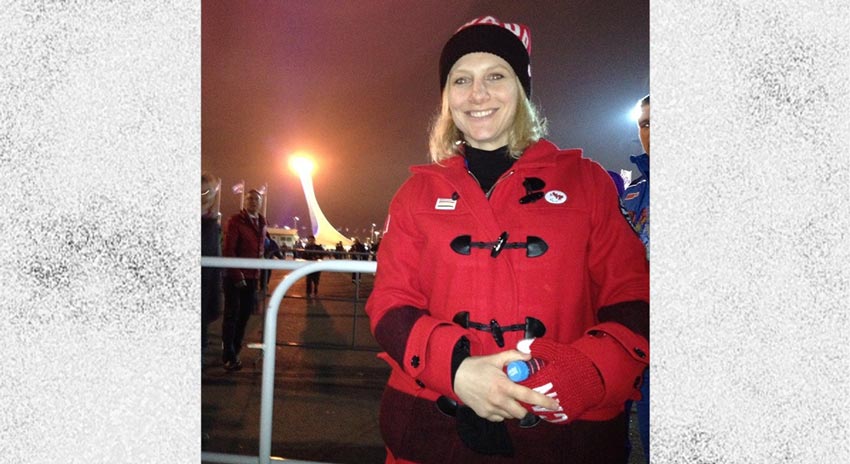
2Previously in your career, you spent eight years working within the British sport system. How was your transition moving into the Canadian sports system? Were there any differences you encountered between the two?
Before I moved to Canada, I was the Games Operations Manager for the British Paralympic Association and when I moved here in 2013, I was contracted by the Canadian Paralympic Committee to support the teams with their final stages of planning and delivery for the Sochi 2014 Paralympic Games.
Although I already knew a lot about the Canadian team, this was a great opportunity for me to learn about the key high-performance partners and stakeholders here.
But while the Major Games operational blueprint is pretty similar between Great Britain and Canada (when it comes to delivering teams at Games), the system is quite different.
I think, like most Europeans who come to work here, I underestimated the size of the country and how different the National and Provincial systems are, which makes it quite difficult to navigate and challenging when trying to find alignment.
I had not worked at the national sport organization level before I joined EC and it is an ongoing process of learning the nuances of the Canadian equestrian industry and sport system, I’m enjoying the journey!
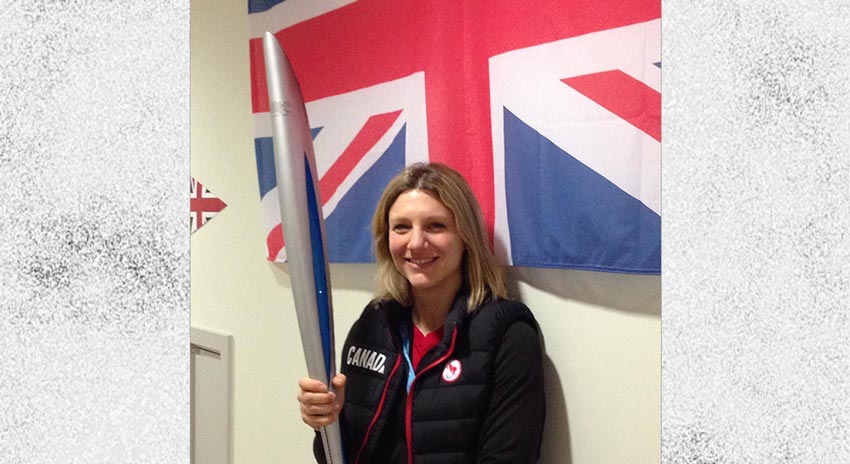
3Equestrian is sometimes considered a niche sport. How much do you focus on growing the sport on a wider scale as Manager of High Performance?
There are two “traditional” methods of growing sport.
- You can have success at the highest level (Olympics, Paralympics, World Championships) and hope that motivates people to become involved in the sport, although this is less sustainable.
- You can also look to grow participation numbers and the strength at the “base of the pyramid” and build a strong system to support those athletes, coaches, practitioners, etc. as they progress.
These have been two key areas of focus.
The added challenge in Equestrian is that you need the right horse, at the right stage of development to have that success.
No athlete will have success at the highest levels without a great horse and partnership.
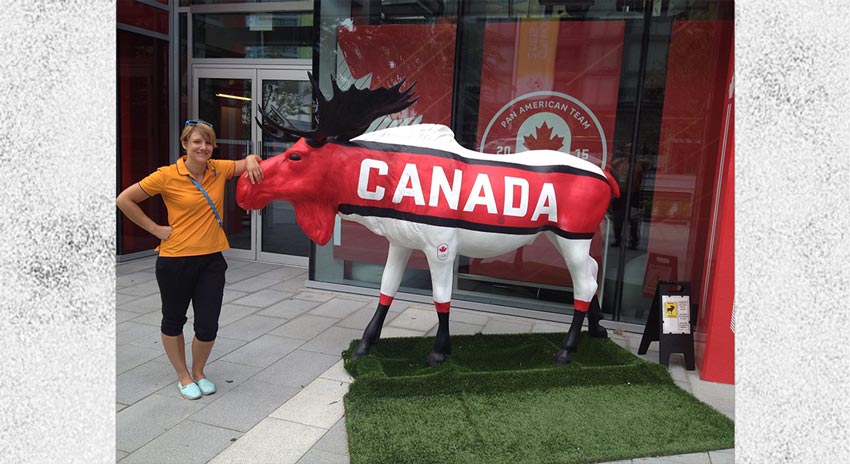
4What is Equestrian Canada doing to bring awareness to and grow equestrian?
The organization works very closely with our Provincial and Territorial Sport Organizations to develop programs at the community level to attract non-equestrians to the sport. A good example of this is the Rookie Riders program, which has been designed to promote physical literacy and fundamental movement skills in children aged 6-12 years of age.
Specially designed barrels are used instead of horses and the program teaches how to safely mount and dismount a horse, plus other key skills before being introduced to a horse for the first time. Ontario Equestrian has been implementing this program very successfully, connecting with schools to introduce it as part of their physical education activities. This link provides more information.
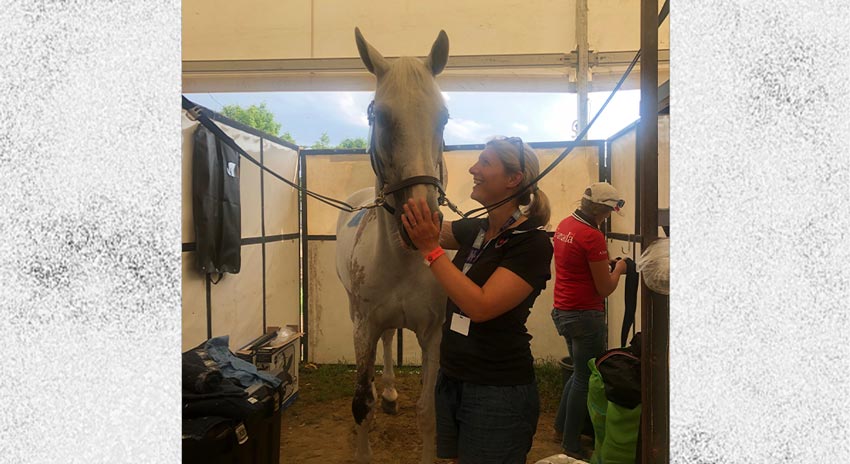
5As someone who has always been intrigued by equestrian, tell us why you think some people have a misconception about the sport and training required to compete.
An athlete’s relationship with their horse is something that is truly unique to our sport. It is a very special partnership that is developed over many years, built on trust and silent (intrinsic) communication. It is like figure skating and the relationship that partners such as Scott Moir and Tessa Virtue spend years building to be successful.
But like any other sport, athletes need the right environment to train and compete in, with yearly training plans, and great coaches and systems supporting them.
Human and Equine sport science and medical practitioners are well integrated into many of our high-performance athlete programs, such as mental performance coaches, physiotherapists, nutritionists, veterinarians, and equine therapists.
The health and welfare of the horse is at the centre of everything we do, but it is just as important for the human athletes to be physically fit and healthy to ride at their very best, so off-horse training in the gym, yoga and strength and conditioning training is all part of an athlete’s program too.
I think some of this misconception has come from how the sport has been broadcasted in the past. This is changing, with commentators explaining the rules, how scoring systems work, and breaking down the sport for non-equestrians to understand.
The more we can do to educate people on what an amazing sport it is, the more people will become engaged, watch, and hopefully try it themselves.
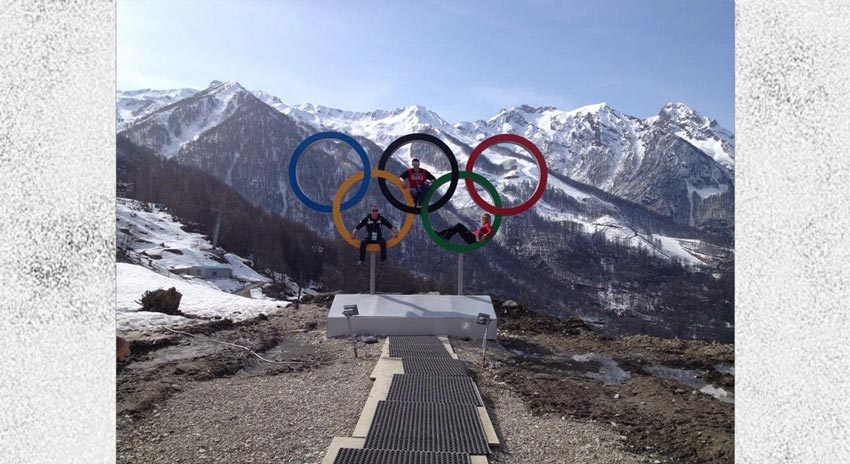
6How has the re-scheduling of the 2021 Summer Olympics changed your role and plans for the rest of the year?
Having been involved in the planning for many Games cycles, developing ‘what-if’ scenarios and crisis management plans is common practice, so we’re always ready to adapt and quickly find solutions when challenges arrive.
I don’t think any of these plans included a pandemic and a Games being postponed by a year though!
At this current time, we are focused on the safety and mental welfare of our athletes and their support team personnel, who have been impacted the most by the re-scheduling of the Games.
We are working very closely with the Canadian Olympic and Paralympic Committees to review our operational plans and create risk management plans, with safety at the forefront.
The Paris 2024 Games is also not that far away in planning terms, and so some of my focus has shifted to building the framework for these Games too. It has certainly been a challenging time but also a great time for reflection and increased engagement with our stakeholders.
7In addition to my previous question and as we look ahead to 2021, what can we expect to see from Equestrian Canada? What should Canadians be looking out for from the organization?
More and better engagement with our stakeholders.
The organization has been struggling to meet the needs of its membership and stakeholders, which is no secret and why the main focus has been on reviewing and enhancing our governance and operational structure, plus business models.
Our Board of Directors is committed to building trust and the task of creating better alignment within our system to meet organization and industry objectives.
It is a slow process that will take time and commitment from all those involved.
[get_current_post_author_pic_and_name]
In her role as Manager of High Performance at Equestrian Canada, Anna Johnson prioritizes high-performance framework and sport education. In order for athletes to be at their best, Anna works diligently at building the right environment for their success. At the grassroots level, growing the sport and athlete development go hand-in-hand. Although Equestrian is sometimes viewed as a niche sport, Anna is supporting athletes and ultimately, helping them achieve their performance goals on an international stage. Equestrian is on the rise in Canada and with Anna's support, I know the sport will only continue to grow!

